That Fit Friend is supported by its readers. I [Jake Boly] run this site myself and buy the gear I review. If you purchase through my site, I may earn commissions on sales, read more here!
In the world of cross-training and CrossFit shoes, models continue to be improved to support both your performance and shoe durability. The RAD ONE and TYR CXT-1 Trainer are both shoes that I’d refer to as the new kids on the block.
The RAD ONE has become known for its refined and tasteful construction, while the TYR CXT-1 Trainer debuted at the 2022 NOBULL CrossFit Games in a pretty big way.
Both of these shoes perform exceptionally well in the gym for lifting, CrossFit, and cross-training, and they each have their own lists of pros and cons.
TYR CXT-1 Trainer Vs RAD ONE Performance
Regarding performance, there is a lot to like about the TYR CXT-1 Trainer and RAD ONE. Both of these shoes are pretty well-rounded from a performance point of view and they each come with their respective lists of pros and cons.
Below, I’m going to discuss how the TYR CXT-1 Trainer and RAD ONE compare to one another for lifting, CrossFit, versatile training, short runs, and daily wear. Hopefully, this section can give you a better idea of which model to go with.
TYR CXT-1 Trainer Vs RAD ONE for Lifting and CrossFit
When it comes to lifting, I don’t think stability will be a major concern in the TYR CXT-1 Trainer or RAD ONE. Both models deliver a nice level of stability for heavy training and neither of these shoes shows major signs of compression in their midsoles.
The TYR CXT-1 Trainer is built on a medium-high density Surge NRG foam midsole and it has a patent pending Stability Platform feature from TYR. For squats over 400 lbs and deadlifts over 500 lbs, I never had issues with stability in this model.
The higher 9mm heel-to-toe drop in the CXT-1 Trainer is also a construction that I think will resonate with certain athletes. For example, if you like having more “heel” when training and like high drops, then you should enjoy this shoe’s lifting performance, especially for leg day.
The RAD ONE is built on RAD’s proprietary Swell Foam midsole which has a medium-density fit and feel. It’s a little softer compared to the CXT-1 Trainer’s midsole, but this doesn’t limit this shoe’s overall stability.
The RAD ONE also comes with a 6mm heel-to-toe drop which sits between popular models like the Nike Metcon 7 and Metcon 8 which feature a 4mm drop and the higher CXT-1 Trainer. This could be a perk for those that want more drop, but not as aggressive as the 9mm.
Either way, neither of these shoes should give you any issues in the context of lifting. Both have a neutral fit, provide a nice level of traction on different surfaces, and have nice levels of stability for heavy-strength sessions.
For CrossFit and CrossFit-style training, I’ve thoroughly enjoyed both of these shoes. Honestly, the RAD ONE and TYR CXT-1 Trainer are two of the models that I think are leading the pack when it comes to the best CrossFit shoes on the market.
The RAD ONE features a textile and synthetic upper which do a good job at preventing abrasion from toe dragging and burpees and friction from rope climbs. I like how there are synthetic overlays around the midfoot and toe box in the RAD ONE.
The CXT-1 Trainer’s upper features a breathable mesh throughout the forefoot and midfoot and has an exaggerated toe guard and toe bumper around the toe box. Comparatively speaking, both of these shoes’ upper constructions are solid for CrossFit’s durability demands.
For rope climbing support and durability, the RAD ONE features a TPU and rubber wrap around the entirety of the shoe and midsole. This shoe has done a pretty stellar job with durability for rope climbs and I like how the wrap bites when j-wrap and s-wrap climbing.
The TYR CXT-1 Trainer features an extended rubber wrap around the lateral and medial midfoot and the heel. This material grips well for rope climbs, however, I did have some breakdown issues in this model on the lateral side of my right shoe.
I’m hoping this is just a one-off issue and it’s tough to say if this will be something that impacts every athlete since this model is so new, but it’s something to keep an eye on if you invest in the CXT-1 Trainer.
Winner: For lifting, both shoes perform exceptionally well. If you like higher drops and shoes that run a bit more stable, go for the TYR CXT-1 Trainer. If you want a model that has a bit more responsiveness, go for the RAD ONE.
For CrossFit, both shoes do a really good job. I like how both shoes blend stability and versatility together really well. The CXT-1 Trainer may give you some issues for rope climbs, so keep an eye on this model, but outside of that, they work well.
TYR CXT-1 Trainer Vs RAD ONE for Versatile Training
When it comes to versatile training including things like HIIT, plyometrics, and class-style workouts, both of these shoes do a good job, but for slightly different reasons.
The RAD ONE’s Swell Foam EVA midsole provides you with a nice springy base and this model does feel a bit more forgiving for longer sessions where you’re doing a lot of jumping. I also like how well the RAD ONE articulates when doing different exercises.
The rubber outsole grips rubber gym floors, turf, and wooden platforms well, so for sled work and multi-directional exercises, I don’t think traction will be an issue if you reach for the RAD ONE.
The upper security in the RAD ONE also feels solid for catching the feet and preventing spillover when really digging into the forefoot when training. My only gripe with this model and versatile training is that it can run a little hot due to the thicker upper.
The TYR CXT-1 Trainer gives you a denser midsole, which comes with a lot of responsiveness. However, I know firmer midsoles are not always everyone’s favorite for versatile training, so definitely keep this in mind before investing.
Personally, I like the midsole construction of the TYR and I think the Surge NRG foam midsole in the forefoot gives you a nice level of ground feedback when doing different plyometrics.
Additionally, I’ve also enjoyed the upper security in the CXT-1 Trainer. This model’s reinforced upper locks the forefoot and midfoot down, so if you’re jumping forward or laterally, you shouldn’t have spillover issues in this model either.
Where the CXT-1 Trainer has the edge over the RAD ONE in this training context is with its additional ankle and arch support. This model’s boot construction is pretty rigid and it helps add another layer of support for the ankles.
On top of that, you also get a little more arch support in the CXT-1 Trainer which could be a perk for those that like having this style of footwear when jumping, doing HIIT, and tackling athletic-style workouts.
Winner: Both shoes are solid for versatile training. If you like a softer midsole, go with the RAD ONE. For those that want additional ankle and arch support and don’t mind denser midsoles, go with the CXT-1 Trainer.
Testing the RAD ONE for Short Runs and Daily Wear
For running, the RAD ONE and TYR CXT-1 Trainer are pretty neck-and-neck with their performance. Both shoes will work for short runs, sprints, and runs programmed in WODs.
Both shoes feature beveled heels which are also nice for adding a little while running despite them both being more “stable” cross-training shoes. For runs ranging from 1-3 miles, these shoes should be okay as long as you understand they’ll run firmer than traditional running shoes.
For longer runs, I’d pass on these shoes due to comfort reasons and the fact that they’re not technically designed or built for this style of training. You’ll get more out of their durability also doing so.
For daily wear, I like the RAD ONE slightly more than the TYR CXT-1 Trainer. I think the RAD ONE is a bit more comfortable for all-day wear and I like their appearance for more casual settings.
Don’t get me wrong, the TYR CXT-1 Trainer also looks good in multiple colorways, but it’s more of a shoe that I’d suggest preserving for your training sessions. It doesn’t have the daily wear versatility edge like the RAD ONE.

TYR CXT-1 Trainer

RAD ONE
TYR CXT-1 Trainer Vs RAD ONE Construction
There are a lot of subtle construction details to note with the TYR CXT-1 Trainer and RAD ONE. Both of these models utilize proprietary features from both RAD and TYR, which I personally enjoy because it helps gives these models more individuality.
Below, I’ll break down individual areas of construction for both of these shoes. This way, it’s a lot easier for you as a reader to navigate the differences that exist between these shoes.
Midsole
The midsole constructions for the RAD ONE and TYR CXT-1 Trainer both feature proprietary materials from both companies. In the RAD ONE, you get RAD’s Swell Foam midsole which is built with a lightweight and responsive EVA foam.
The midsole in the RAD ONE is covered entirely with a TPU and rubber wrap which is great for long-term durability. This midsole is also mobile and it articulates well to give you an additional level of “ground feel” when training.
In the TYR CXT-1 Trainer, you get TYR’s proprietary Surge NRG foam which provides a higher-density feel compared to the Swell Foam used in the RAD ONE. You can see this material in the forefoot of the CXT-1 Trainer.
Both models have a fairly comparable stack height in the forefoot, midfoot, and heel, with the TYR being slightly higher throughout. The TYR’s midsole is once again a bit firmer compared to the RAD ONE’s midsole.
Outsole
The outsole constructions are well-built in both the RAD ONE and TYR CXT-1 Trainer. In the RAD ONE, you get a full rubber outsole that has a wave tread patterning.
This outsole once again also wraps over the midsole in this shoe and extends upwards on the midfoot, heel, and toe box. There’s an extended outsole wrap that wraps up the tip of the toe box.
The TYR CXT-1 Trainer also features a full rubber outsole and it has a varied tread patterning throughout. The midfoot and heel also feature an additional wrap and the toe box has a thick toe bumper. There’s a little arch in the midfoot of the CXT-1 Trainer.
Both shoes’ outsole constructions provide a nice level of traction on different surfaces and they both feel plenty durable for different training settings and contexts.
Upper
On the RAD ONE, you have an upper built with a blend of textile and synthetic overlays. The toe box has a reinforced overlay with double stitching. There are also overlays around the midfoot and heel.
The RAD ONE’s upper does a good job with overall durability and I haven’t had any glaring issues with this model yet. My only complaint with the upper of the RAD ONE, which I mentioned above, is it can run a little warm at times.
The CXT-1 Trainer features a breathable and reinforced mesh through the toe box and midfoot with an additional internal toe guard wrapping the entirety of the toe box.
The midfoot and heel feature reinforced overlays and for the most part, I thought this upper did a pretty good job with breathability and it feels durable for various training settings.
Tongue and Laces
In both models, tongue security shouldn’t be an issue for you. The RAD ONE features a padded and perforated tongue and the tongue has a higher gusset construction so it never slides or moves when training.
There are five primary eyelets on the RAD ONE, and the four bottom eyelets are built with an internal webbing lacing system with the top fifth eyelet utilizing a traditional eyelet construction.
The TYR CXT-1 Trainer’s tongue also has a gusseted construction, but the gusset starts at the middle of the tongue. There are also two additional tongue loops with this model, and tongue security shouldn’t be an issue whatsoever.
In the CXT-1 Trainer, you get a breathable mesh tongue that has a nice width to it, and you get five primary eyelets with a sixth for lace-locking.
Insole
When it comes to the insole construction on both of these shoes, you can expect to get thin foam removable insoles on both models. I like both of these insoles because you never really slide around in them as you can in models like the Reebok Nano X2.
If you have custom orthotics and inserts that you plan to use in either of these shoes, then I’d suggest exploring the CXT-1 Trainer. It has a slightly higher upper volume so I think it will be better for accommodating the varied thicknesses of different insoles.
Weight and Heel-to-Toe Drop
The weight in both of these models is pretty much identical and comparable and the heel-to-toe drops are pretty similar, too. Below are the weight and heel-to-toe drops for the RAD ONE and TYR CXT-1 Trainer.
- RAD ONE Weight: 12.70 oz (for my size 10 model)
- RAD ONE Heel-to-Toe Drop: 6mm heel-to-toe drop.
- TYR CXT-1 Trainer Weight: 12.65 oz (for my size 10 model)
- TYR CXT-1 Trainer Heel-to-Toe Drop: 9mm heel-to-toe drop.
TYR CXT-1 Trainer Vs RAD ONE Sizing
When it comes to sizing in the TYR CXT-1 Trainer and RAD ONE, most lifters and athletes should be safe going true to size in these models. In both shoes, the length fits true and they both have a neutral width.
In the RAD ONE, the sizing was originally off and you had to size up a half size. However, in their newer colorways and iterations, the sizing discrepancy has been fixed, so you should be safe opting for true to size in this model.
The CXT-1 Trainer does have a tiny bit more width through the tip of the toe box and its upper volume is a bit higher than the RAD ONE, so it may be the better option for lifters and athletes that have custom insoles they want to use.
- RAD ONE Sizing Thoughts: Go true to size.
- TYR CXT-1 Trainer Sizing Thoughts: Go true to size.
If you have additional sizing and fit questions about CXT-1 Trainer or RAD ONE, drop a comment below and I can help you out.
TYR CXT-1 Trainer Vs RAD ONE Durability
From a durability comparison standpoint, I think both of these shoes should fair pretty well for most lifters and athletes. These models have multiple construction features to help their long-term abilities to withstand stressors from different training contexts.
For example, I don’t think you’ll have issues with either of these models’ upper construction and the sole of each model does a pretty good job of withstanding CrossFit workouts, cross-training, and lifting sessions.
My only potential durability concern that I’ve had arise with these models is the midfoot construction on the TYR CXT-1 Trainer. I had my model lose a chunk of its construction during one of my rope climbing sessions where I was j-wrap climbing.
Now, it’s tough to say if this issue will be apparent or happen to everyone because this model is still new and we lack data on them. Plus, this could just be a one-off issue that I ran into, so please take this durability point with a grain of salt.
Either way, I think both models should do a pretty good job regarding durability for most lifters and athletes. Also, if you’re not planning to rope climb in the TYR shoes, then my point above is null. If you have additional durability questions, drop a comment below.
Price Comparison and Thoughts
The price varies slightly between the TYR CXT-1 Trainer and RAD ONE. Both of these models are what I would describe as more premium compared to other budget cross-training shoes.
For the TYR CXT-1 Trainer, you can expect to pay between $130-139.99 USD depending on the colorway you go with. For the RAD ONE, you can expect to pay $150 USD which is a similar price to the STR/KE MVMNT Haze Trainer and Inov-8 F-Lite G 300.
Personally, I think the price point is fair for both shoes depending on your training shoe asks. Both of these shoes have well-rounded performances and I like the construction details that go into each model.
I would suggest making sure you align with each shoe’s fit and performance before you invest so you can make the best call per your individual training shoe wants and needs.

RAD ONE

TYR CXT-1 Trainer
Takeaway Thoughts
The TYR CXT-1 Trainer and RAD ONE are two of the top-performing cross-training shoes on the market. Both models excel for lifting, CrossFit, and cross-training, and each delivers a different fit and feel.
If you like higher heel-to-toe drops in your training shoes and want more stability, go with the CXT-1 Trainer from TYR. For those that love a bit more versatility and want a slightly more cush midsole, go with the RAD ONE.
Either way, I don’t think you’ll be disappointed with either of these shoes, especially if you opt for the model that aligns with your training wants and needs best.
If you have additional questions on the TYR CXT-1 Trainer and RAD ONE and which is best for you, drop a comment below or reach out to me personally via Instagram (@jake_boly or @that_fit_friend).














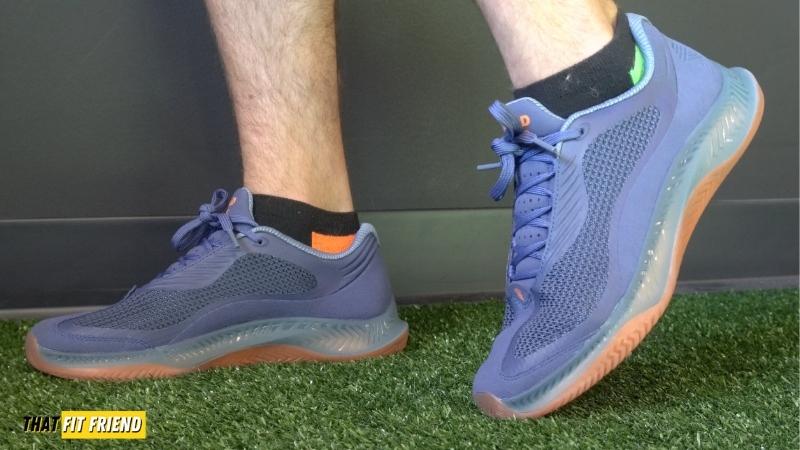















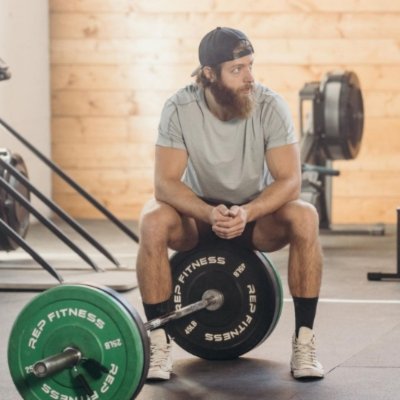

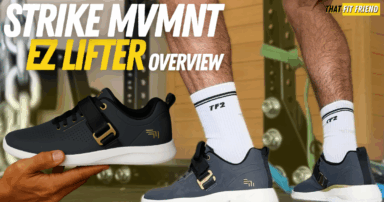
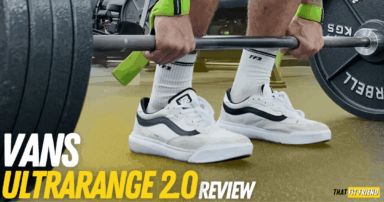
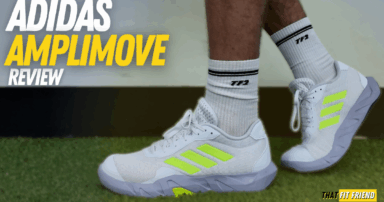
Freddy
Hi, would like to see what you think for sizing. I wear 9.5 in Rads and metcons. I’m in this size more for the width and the extra length is tolerable. Do you think i need to go to US10 in the CXT-1? Thank you!
Hey Freddy! I’d go 9.5 in the TYR, too, if that’s the size you opt for to get more width. I’d also suggest going with the Wide option in the 9.5!
James Eden
Hello,
I enjoyed your in-depth review. Is size and fit comparable to Nike Metcons? Size 10 in Metcon 7s fits perfectly.
Thx in advance,
James Eden
Thanks for checking out the article. Should be comparable, tbh. The RAD may run a tad more snug, though, and going up a half-size in that model can be a safe call for wider feet!